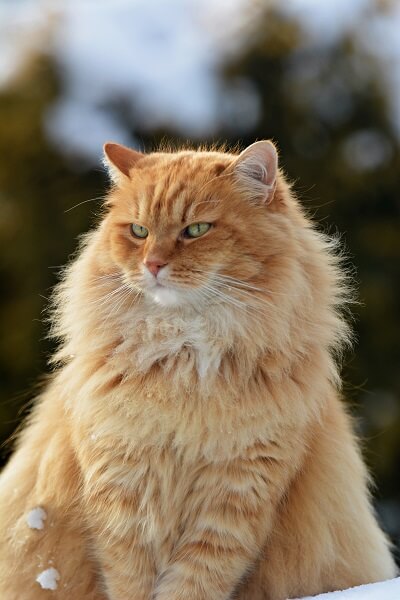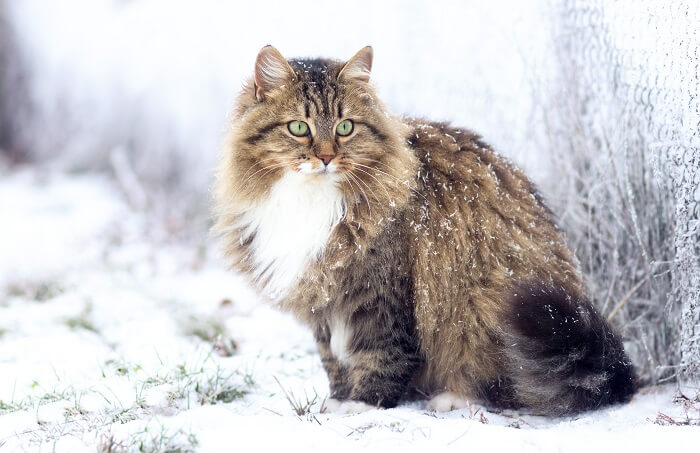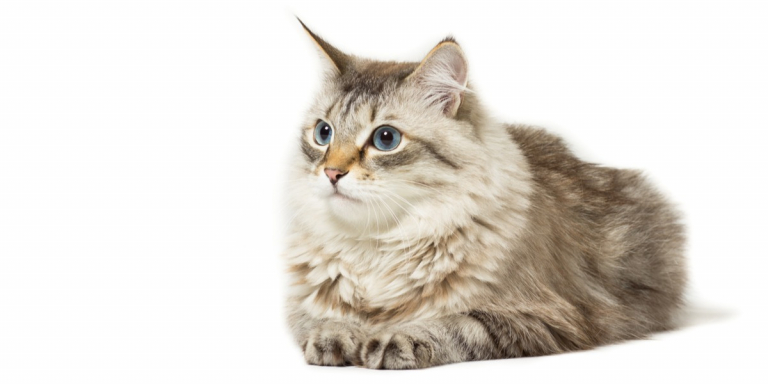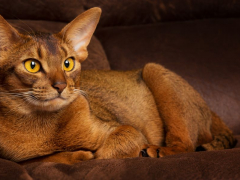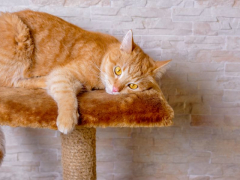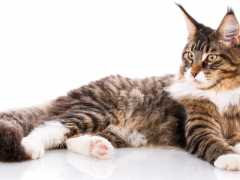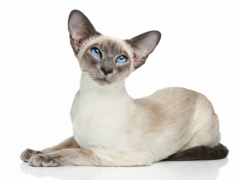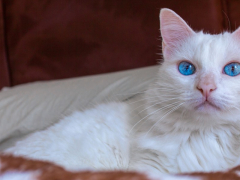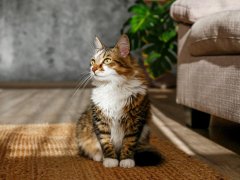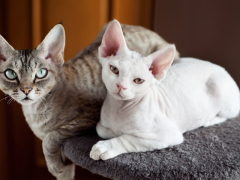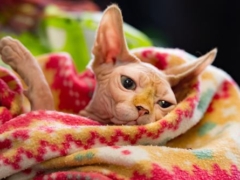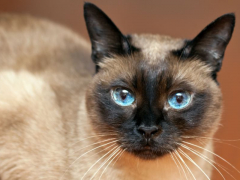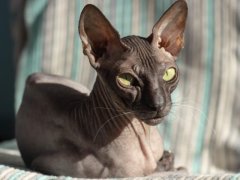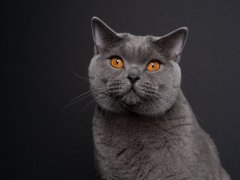Personality and Temperament
Formally known as the Siberian Forest Cat, the Siberian is a medium-sized semi-long-haired breed with a stunning triple coat and a charming personality.
Intelligent and playful, the Siberian cat loves to give and receive affection. These adorable kitties live to spend their days and nights alongside their favorite people, often chatting in melodic voices that have nothing in common with the harsher vocalizations of other talkative breeds such as the Siamese.
Siberian cats have a great reputation for friendliness, even where strangers are concerned. These cats happily greet everyone and so long as their experience is a positive one, they have the ability to befriend very young children, other felines, and respectful dogs.
Even though they are friendly and playful, Siberian cats are not terribly mischievous. They will get into things on occasion, but they are far more interested in watching their favorite humans while providing little tidbits of advice via those chirping, trilling, meows that contribute to their lovability. Since they like water and have water resistant coats, Siberians have a comical habit of playing in the water and even joining their favorite people at shower time.
The Siberian cat does have a mellow side, but it may take some time for quiet behaviors to dominate as this breed doesn't reach full maturity until about five years of age.
Siberian cats aren't terribly clingy, but they do thrive with companionship as they are communal by nature. If you spend most of your time away from home, consider adopting a second cat to keep your Moscow Longhair company.
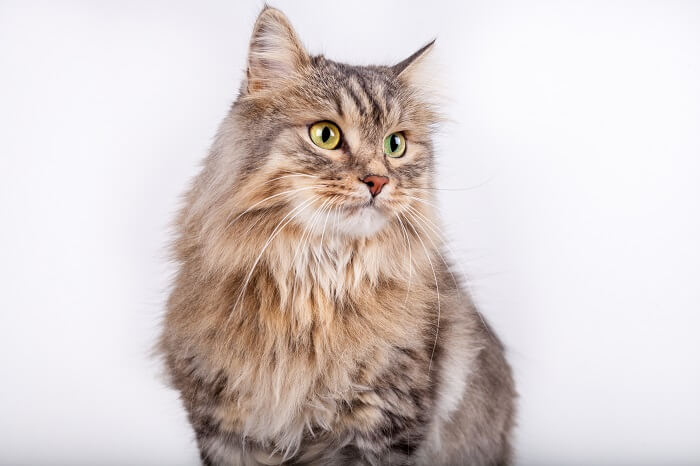
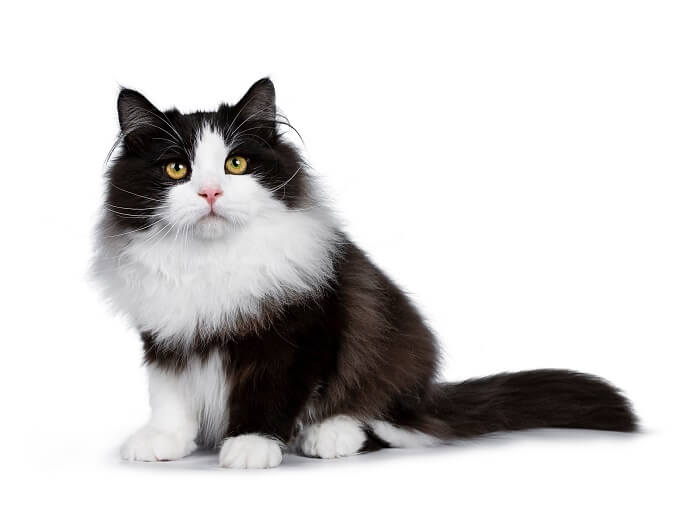
Care
Nutrition
Grooming
Exercise
Health
The Siberian cat does not have any special nutritional requirements; however, you may want to choose food with added Omega fatty acids to support healthy skin and keep your cat's coat in great condition. We recommend choosing high-protein, low carbohydrate food that's appropriate for your cat's life stage, as it can promote proper body weight and help your pet achieve longevity.
The Siberian cat has a very thick triple coat that consists of long guard hairs on the outside, a second long coat made up of awn hairs, and a shorter, downy undercoat that lies close to the skin. Surprisingly, this coat has a tendency to remain tangle-free, even without frequent brushing. Siberian cat owners find themselves brushing far more often as winter weather gives way to summer's warmer temperatures and the heavy undercoat is shed.
Since the Siberian cat is so playful and energetic, you might want to keep their claws trimmed to help prevent damage to your furnishings, clothing, and skin. In addition, you may wish to promote better dental health by teaching your cat to allow you to brush their teeth.
Beneath that thick, fluffy coat lies the heart of an Olympian. Siberian cats love to show off their athletic prowess and will do so whether you provide them with appropriate cat furniture or not. These kitties truly appreciate tall cat condos with big platforms to accommodate their large size. They also enjoy wall-mounted shelves, window seats, scratching posts, and interactive toys.
While you won't have to provide your cat with too much encouragement to play during its formative years, you may need to take the lead later in life. Siberian cats can easily become obese without ample exercise.
While Siberian Forest cats are generally healthy, they do have a slightly elevated risk for hypertrophic cardiomyopathy. Some individuals are prone to feline lower urinary tract disease.
History
The Siberian cat is a naturally occurring cat breed that has been refined through selective breeding. These cats originate from Russia, and the breed may be hundreds or even over a thousand years old. Some feline geneticists have suggested that these ancient cats might have contributed some of the DNA that went into creating new or domestic long-haired cats.
As one of Russia's national treasures, Siberian cats have enjoyed pride of place in folklore and fairy tales. According to legends, Siberians guided souls to the underworld, guarded homes, told stories, and sang songs. One particularly appealing legend says that anyone who buys or builds a new home should let the Siberian cat enter first, and for luck, place a bed in the spot where the cat decides to lie down.
Incredibly, and despite its long history in Russia, the breed is a recent addition to Western breed registries. One of the first Siberian cat breed standards was published by the Kotofei Cat Club of St. Petersburg in 1987.
Siberian cats were introduced to life in America in 1990, when Elizabeth Terrel of Starpoint Cattery imported a trio of Siberians, naming them Kaliostro, Nain, and Ofelia.
The International Cat Association. (TICA) accepted Siberians as a new breed in 1992 and elevated it to championship status in 1996. The Cat Fanciers Association granted official recognition in 2000 and advanced the breed to championship status in 2006. Today, the Siberian cat enjoys recognition around the world and is gaining popularity. The breed is still considered to be somewhat rare outside Russia, but is getting easier to find.
